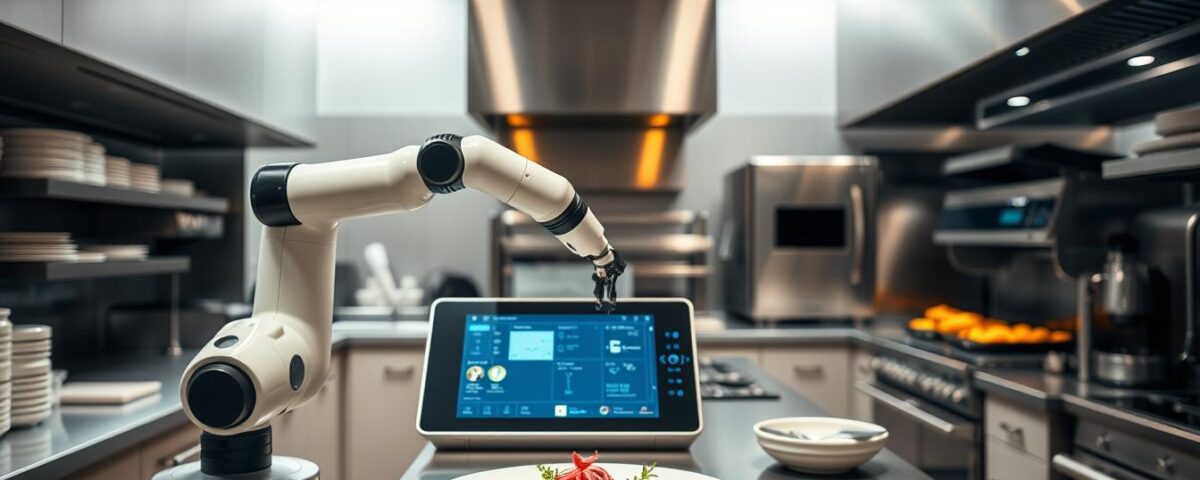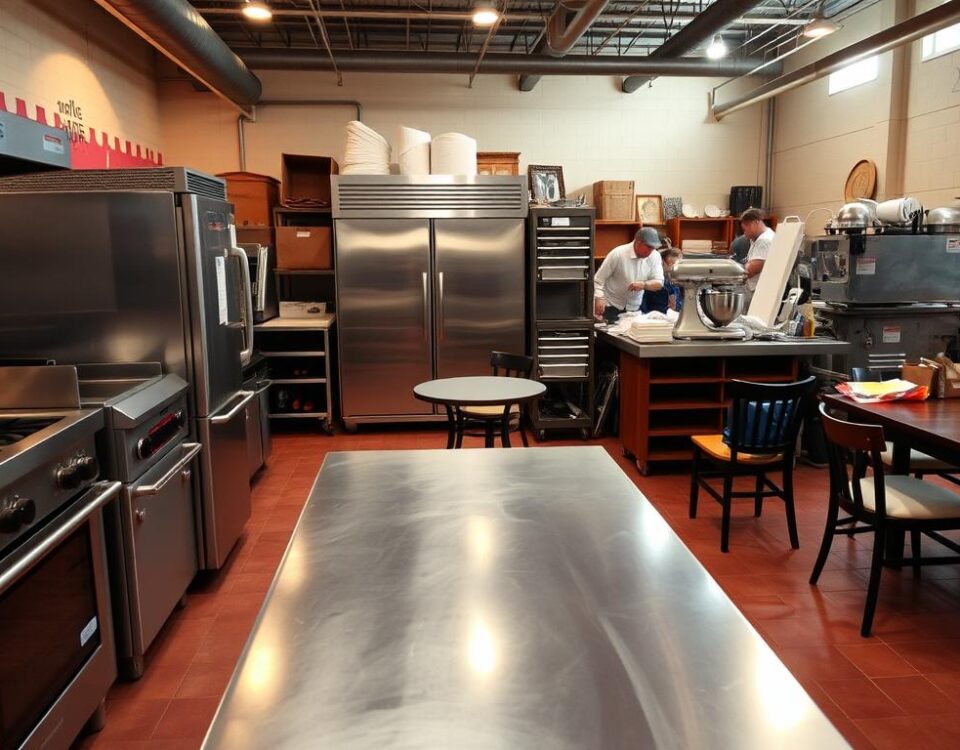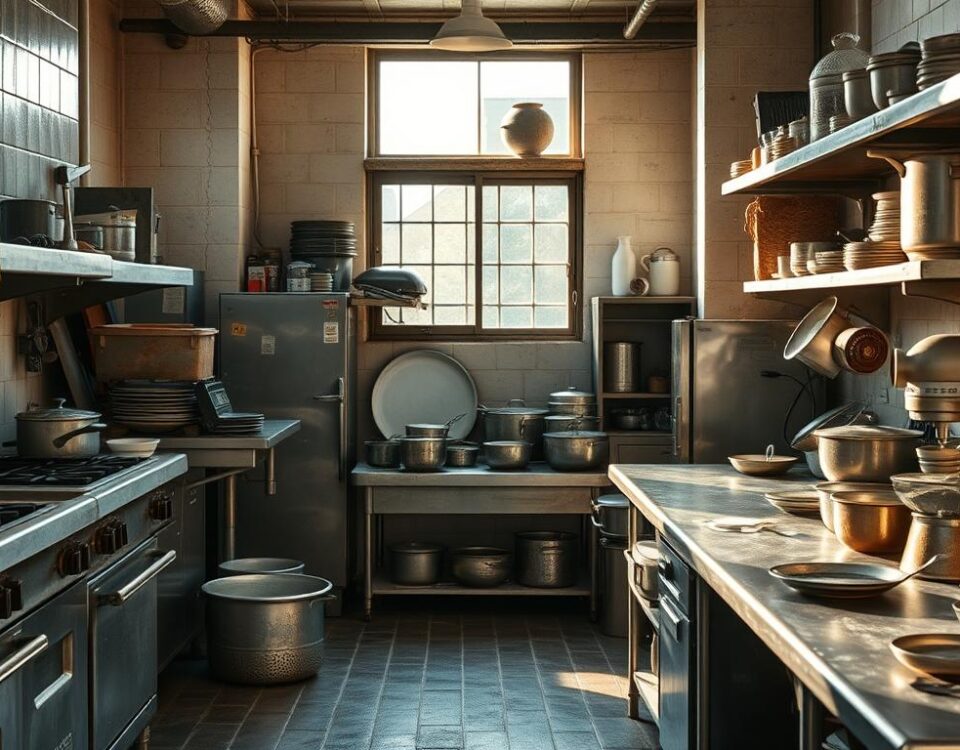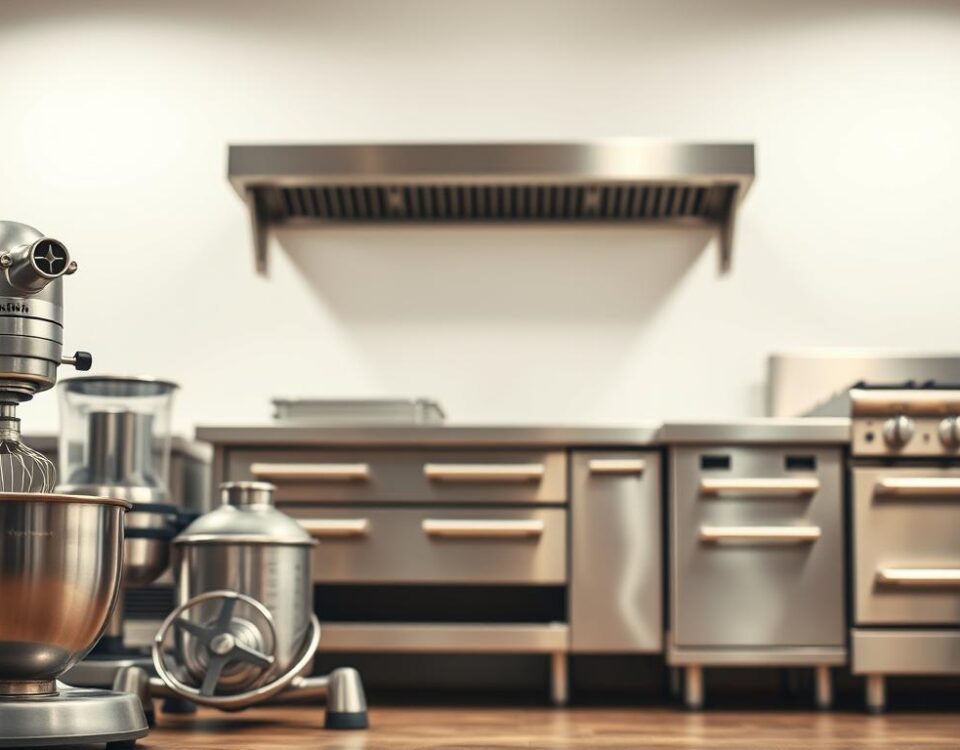
Eco-Friendly Chef Tools That Actually Work—Top Picks for 2025
June 23, 2025
10 Common Sauce Mistakes Chefs Make (and How to Fix Them)
June 24, 2025I recently visited a bustling restaurant where the staff was struggling to keep up with the demanding pace, and it was clear that labor costs were eating into their profit margins. This is a common challenge in the industry, with labor shortages and rising operational costs becoming increasingly prevalent.
Did you know that automation can help reduce labor costs by up to 30% in some cases? As the industry continues to evolve, it’s becoming clear that technology is the key to improving efficiency and boosting profit. In this article, I’ll explore six smart automation tools that are transforming kitchen operations and helping restaurants stay competitive.
Key Takeaways
- Discover how automation can help reduce labor costs and improve efficiency in your restaurant.
- Learn about six smart tools that can help you streamline kitchen operations.
- Understand the benefits of implementing automation technology in your business.
- Explore real-life examples of restaurants that have successfully integrated automation.
- Find out how automation can help you boost profit margins and stay competitive.
The Rising Challenges in Restaurant Operations
Restaurants today operate in a high-pressure environment where efficiency is key to survival. The fast-moving nature of the business demands that every second counts, and maintaining high standards across service, food quality, and customer experience is crucial.
Labor Shortages and Rising Costs
The restaurant industry is grappling with significant labor shortages, making it challenging to maintain the desired level of service and quality. Additionally, rising supply costs are putting pressure on profit margins, making it essential for restaurants to optimize their kitchen operations to stay competitive.
The Need for Operational Efficiency
Inefficient kitchen operations directly impact customer satisfaction, with slow service being a major complaint among diners. By improving operational efficiency, restaurants can enhance customer satisfaction scores and increase repeat business. This involves not just speeding up service but also ensuring accuracy, consistency, and maintaining quality during peak hours.
The need for operational efficiency extends beyond just speed; it encompasses accuracy, consistency, and the ability to maintain quality during peak hours. By streamlining kitchen operations, restaurants can reduce stress for staff, minimize errors, and improve overall performance.
Understanding Restaurant Kitchen Automation
Kitchen automation is transforming the restaurant landscape, offering numerous benefits for owners and customers alike. By streamlining kitchen operations, restaurants can improve efficiency and reduce labor costs.
Restaurant kitchen automation involves the use of technology to automate various kitchen tasks, such as food preparation, cooking, and inventory management. This can lead to significant cost savings, with some restaurants reporting 20-50% reductions in front-end labor costs.
How Automation Transforms Kitchen Operations
Automation transforms kitchen operations by improving consistency in food quality, ensuring that every dish meets the same standards regardless of which staff member is working. Automated systems can also increase throughput during peak hours, allowing restaurants to serve more customers without adding staff.
Key Benefits for Restaurant Owners
The key benefits of restaurant kitchen automation include reduced food waste through precise portion control and inventory management, directly improving profit margins. Additionally, automation can lead to improvements in customer satisfaction scores due to faster service and fewer errors.
- Significant cost savings through reduced labor costs
- Improved consistency in food quality
- Increased throughput during peak hours
- Reduced food waste through precise portion control and inventory management
- Improved customer satisfaction scores
By adopting kitchen automation, restaurant owners can gain a competitive edge in a challenging market and improve their bottom line.
Kitchen Display Systems (KDS)
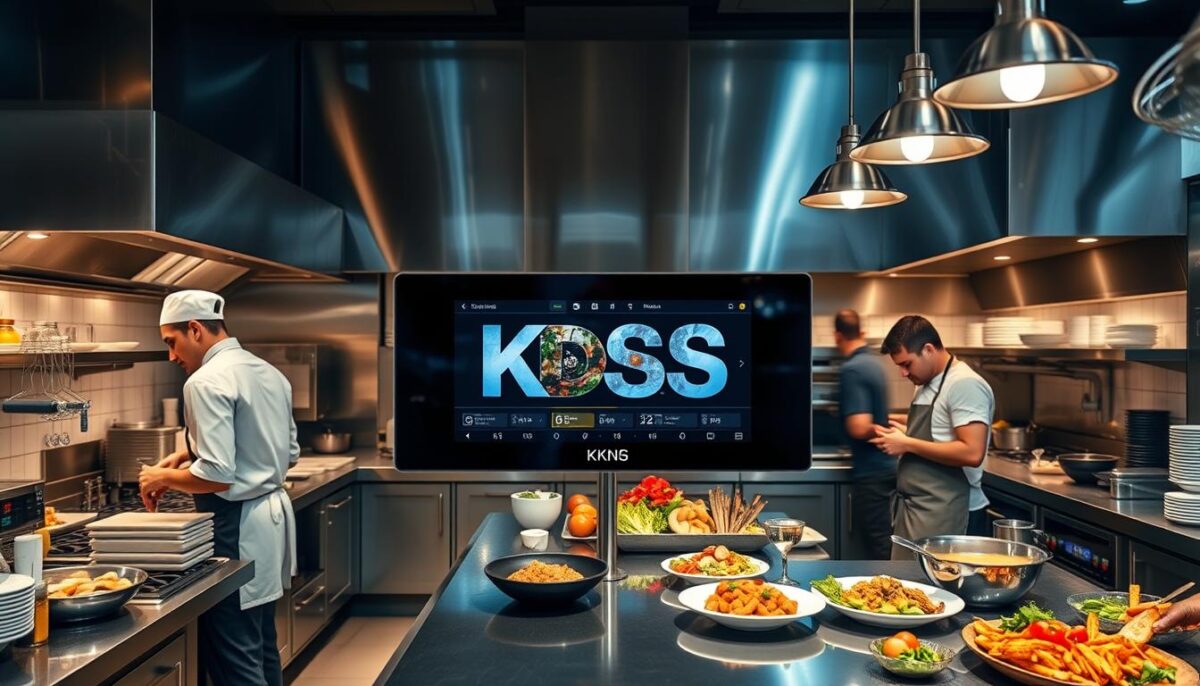
Kitchen Display Systems (KDS) have emerged as a crucial tool for restaurants aiming to optimize their kitchen operations. By implementing a KDS, restaurants can significantly enhance their kitchen’s productivity and efficiency.
How KDS Streamlines Order Management
A Kitchen Display System revolutionizes order management by providing a digital interface that displays orders in real-time, reducing reliance on manual processes and minimizing errors. This streamlined order management enables kitchen staff to prioritize tasks more effectively, ensuring that orders are prepared and served promptly.
The integration of KDS with kitchen operations allows for real-time updates on order status, enabling kitchen staff to manage their workflow more efficiently. This results in improved kitchen performance and enhanced customer satisfaction.
Integration with Existing POS Systems
Modern KDS solutions are designed to integrate seamlessly with existing Point of Sale (POS) systems, allowing restaurants to enhance their operations without replacing their entire technology infrastructure. This integration creates a unified system that tracks orders from the moment they’re placed until they’re served, providing valuable data on kitchen performance and efficiency.
Seamless integration with existing POS systems enhances end-to-end workflow efficiency beyond food preparation. A majority (84%) of restaurant operators with a KDS in place believe it yields a strong ROI, demonstrating the financial benefits of this integration.
Smart Cooking Equipment and Appliances
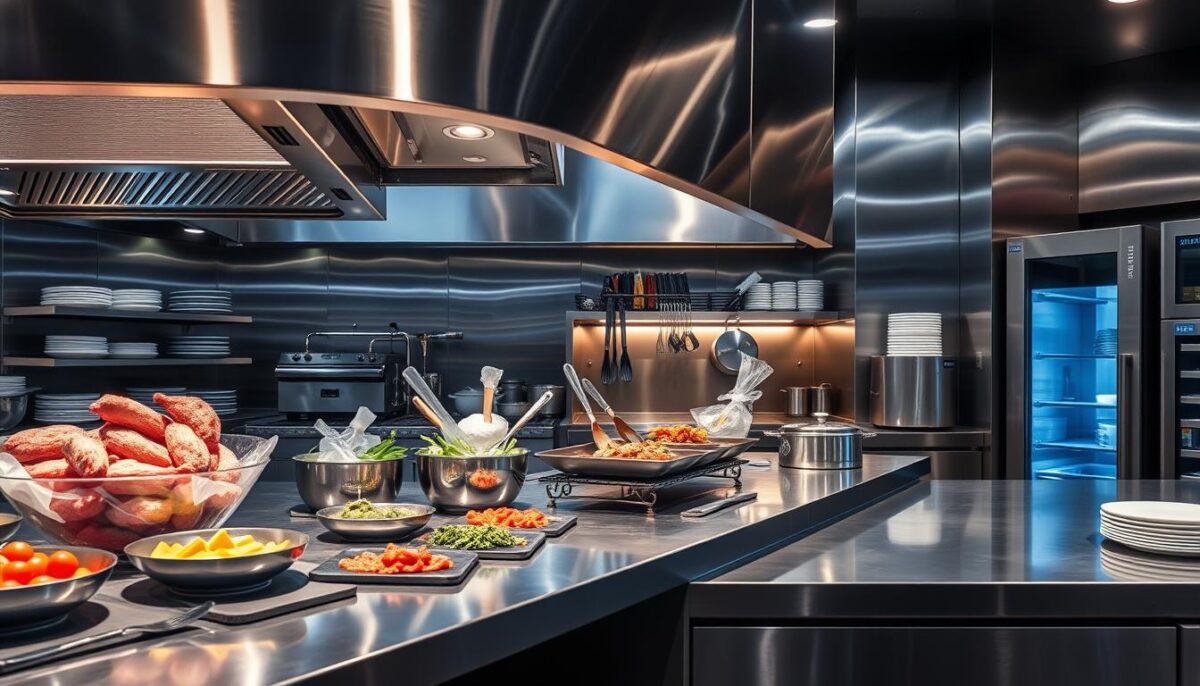
The future of restaurant kitchen automation lies in smart cooking equipment and appliances that ensure consistency and quality. These advanced tools are transforming kitchen operations by providing precise control over cooking processes, enhancing food quality, and reducing labor costs.
Automated Fryers and Grills
Automated fryers and grills are revolutionizing the way restaurants prepare fried foods and grilled items. These smart appliances use advanced technology to maintain precise temperatures, ensuring that food is cooked to perfection every time. By automating the frying and grilling process, restaurants can achieve consistency in food quality, reduce cooking times, and minimize the risk of human error.
With automated fryers and grills, kitchen staff can focus on other tasks while the appliance handles the cooking. This not only improves kitchen efficiency but also enhances the overall dining experience by providing customers with consistently high-quality dishes.
Temperature-Controlled Cooking Systems
Temperature-controlled cooking systems utilize precision technology to maintain exact cooking temperatures, eliminating variables that can affect food quality and consistency. These systems incorporate IoT sensors that continuously monitor and adjust cooking conditions in real-time, ensuring perfect results regardless of external factors.
By using temperature-controlled cooking methods, such as sous-vide, restaurants can achieve precise preparation of meats, seafood, and other temperature-sensitive items. These systems can be programmed with specific recipes and cooking profiles, ensuring that food is prepared to the exact standards set by the chef every time. Moreover, temperature-controlled automation helps restaurants meet food safety standards by maintaining foods at proper temperatures throughout the cooking process.
Furthermore, these systems can be integrated with inventory and ordering systems to ensure that ingredients are always at peak freshness when prepared. This integration enhances kitchen automation, streamlines food preparation, and contributes to a more efficient kitchen operation.
Robotic Kitchen Assistants
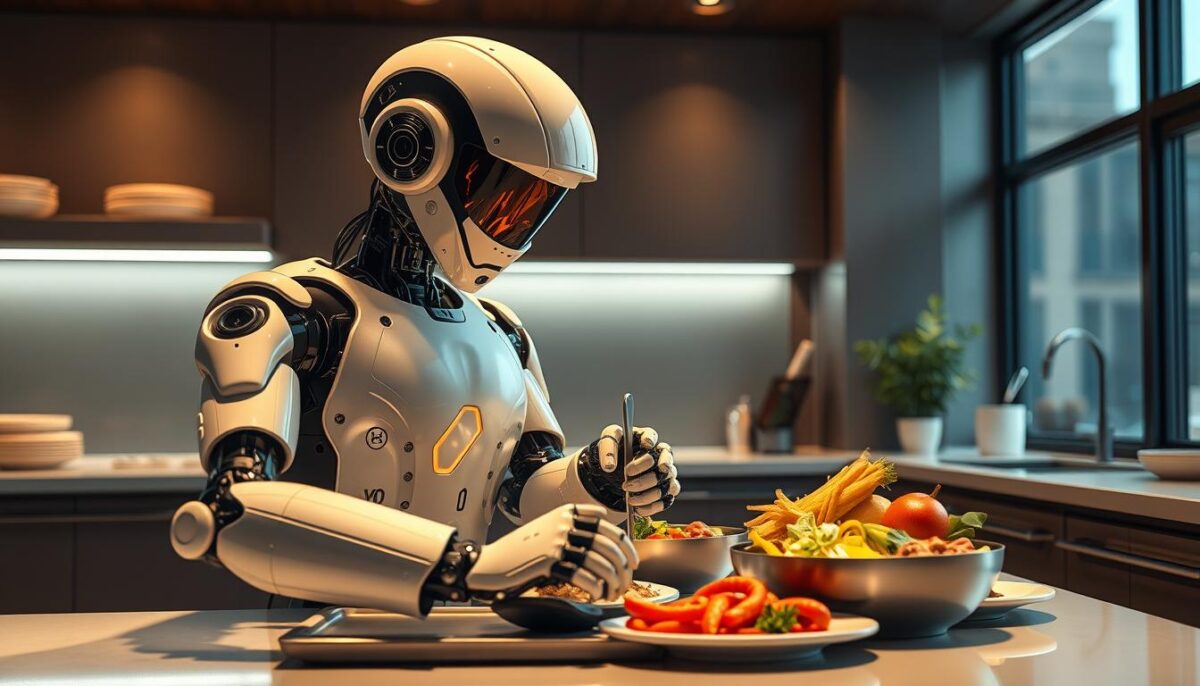
Robotic kitchen assistants are transforming the culinary landscape, enhancing efficiency and consistency in food preparation. These advanced systems are being integrated into restaurant kitchens to automate various tasks, from food preparation to cooking and plating.
Food Preparation Robots
Food preparation robots are revolutionizing kitchen operations by automating tasks such as chopping, slicing, and mixing ingredients. These robots can work tirelessly, ensuring that ingredients are prepared to exact specifications, enhancing the overall quality and consistency of dishes. For instance, Chipotle is testing autonomous kitchen assistants that use AI to make and season tortilla chips, showcasing the potential of robots in food preparation.
The use of food preparation robots not only streamlines kitchen tasks but also allows staff to focus on other critical aspects of service, improving the overall customer experience.
Cooking and Plating Automation
Cooking and plating automation represents a significant advancement in kitchen technology, with robotic systems capable of preparing dishes with unparalleled consistency. These robots can handle multiple cooking methods, including grilling, frying, and stir-frying, all while adhering to precise recipes. White Castle has successfully deployed robotic cooking systems to automate burger and fry cooking in their kitchens, demonstrating the efficiency and consistency these systems can bring to high-volume restaurants.
Moreover, plating robots are enhancing the presentation of dishes, ensuring that every meal not only tastes the same but also looks identical, bringing precision and artistry to food presentation. By leveraging computer vision and AI, these systems monitor cooking progress and make real-time adjustments, ensuring perfect results every time.
Self-Ordering Kiosks and Tableside Ordering
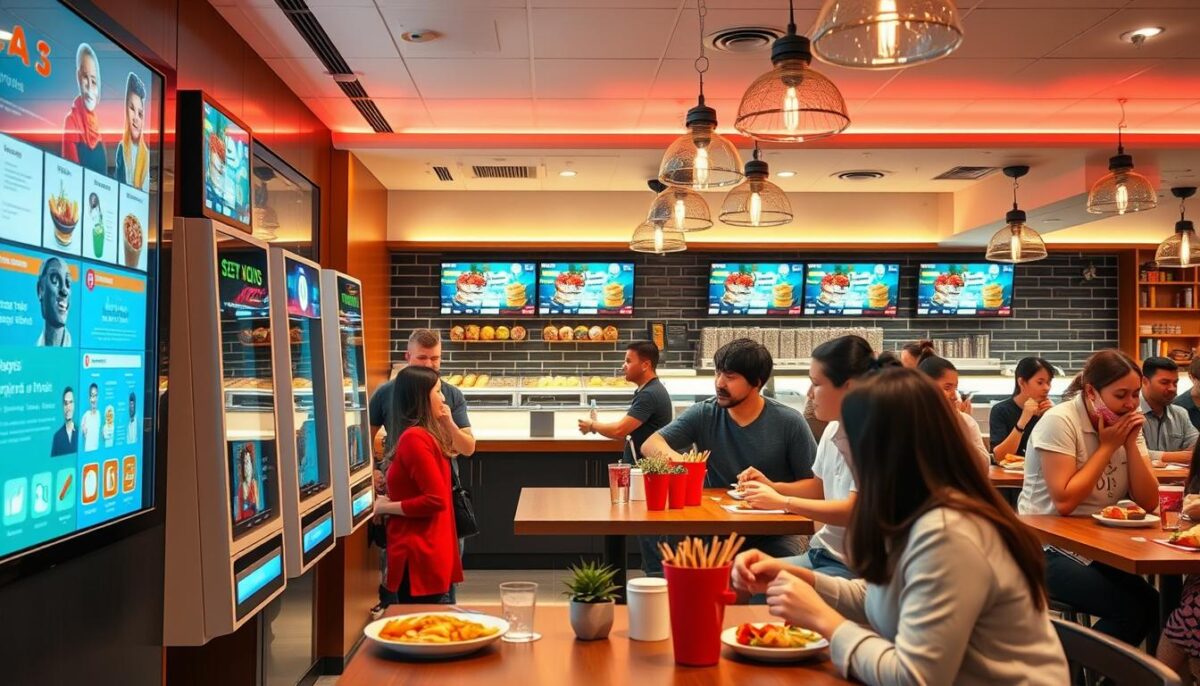
The rise of self-ordering kiosks and tableside ordering is transforming the restaurant industry by improving service quality and customer experience. These systems empower customers to place orders directly, reducing waiting times and inaccuracies.
Reducing Front-of-House Labor Needs
Self-ordering kiosks significantly reduce the need for front-of-house labor, allowing restaurants to allocate staff more efficiently. By automating the ordering process, restaurants can minimize the number of servers needed, thus reducing labor costs. This shift enables staff to focus on enhancing the overall dining experience.
Enhancing Order Accuracy and Customer Experience
Self-ordering systems improve order accuracy by eliminating miscommunication between customers and servers, with data showing up to a 56% reduction in order errors. Customers can customize their orders in detail without feeling rushed, leading to higher customer satisfaction. Digital ordering provides clear visual representations of menu items, helping customers make informed choices. Moreover, these systems offer real-time updates on order status, meeting the expectation of 65% of customers who consider order tracking important.
By reducing wait times, self-ordering kiosks address a key concern for the 56% of diners who prioritize speed of service. With 77% of consumers expecting automation to accelerate dish preparation, these systems help restaurants meet this expectation, enhancing the overall dining experience. When technology handles routine tasks, human staff can focus on creating memorable moments of hospitality, further improving customer satisfaction and service quality.
Inventory Management Systems
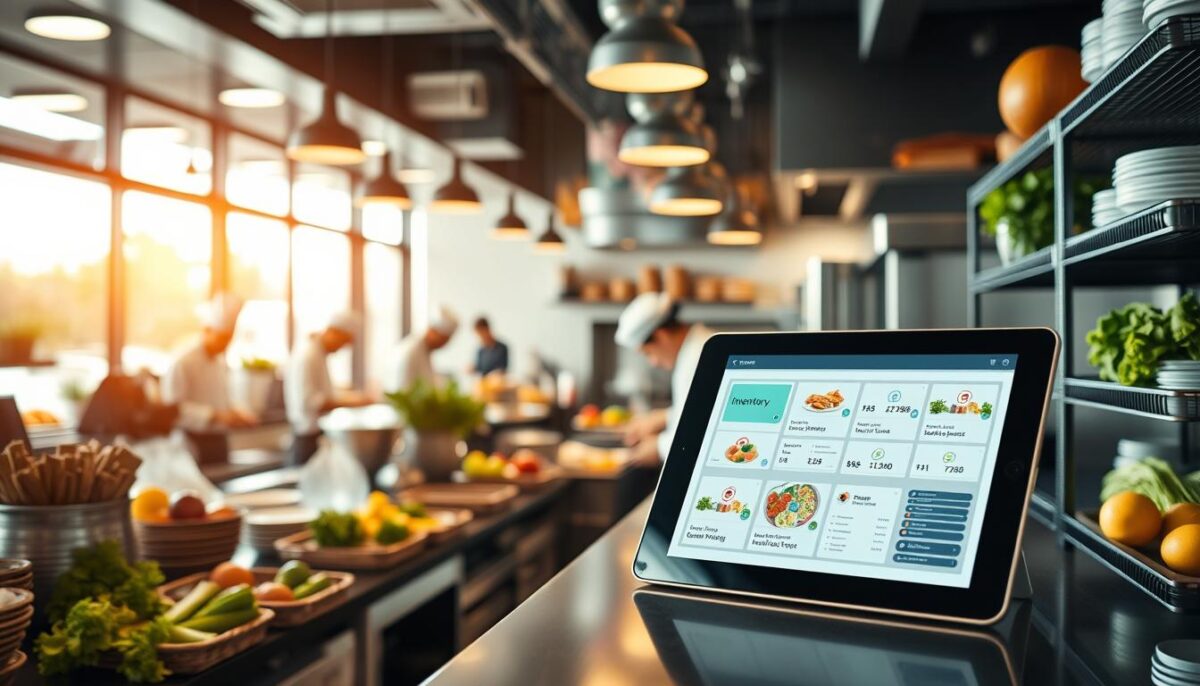
The right inventory management system can significantly impact a restaurant’s bottom line. By leveraging technology to track and manage inventory, restaurants can reduce waste, lower costs, and improve overall efficiency.
Automated Inventory Tracking and Ordering
Automated inventory tracking and ordering systems provide precise data on ingredient usage, expiration dates, and optimal ordering quantities. This information helps restaurants implement first-in, first-out (FIFO) inventory practices, ensuring older ingredients are used before newer ones. By doing so, restaurants can significantly reduce food waste and minimize the risk of expired or spoiled ingredients.
These systems also enable restaurants to automate the ordering process, saving time and reducing the likelihood of human error. By integrating with suppliers, restaurants can receive timely deliveries and take advantage of optimal pricing.
Reducing Food Waste and Controlling Costs
Reducing food waste is a critical aspect of inventory management, as it directly impacts a restaurant’s profit margins. By precisely controlling portions and reducing waste, restaurants can cut down on food costs. According to industry reports, some restaurants have seen 2-6% improvements in profit margins after implementing automated inventory management systems.
Moreover, by controlling portion sizes and ingredient usage, restaurants can prevent over-portioning that can erode profits over time. By adopting inventory automation, restaurants can also adapt quickly to price fluctuations in ingredients, adjusting recipes or pricing to maintain margins. For more information on how to optimize your restaurant’s operations, visit Delivisor’s Magic.
Implementing Kitchen Automation: A Step-by-Step Approach
Embracing kitchen automation requires a thoughtful approach to ensure a seamless integration into your existing operations. As you consider automating your kitchen, it’s essential to follow a structured process to maximize the benefits and minimize disruptions.
Assessing Your Restaurant’s Automation Needs
The first step in implementing kitchen automation is to assess your restaurant’s specific needs. This involves analyzing your current operations, identifying areas where automation can have the most significant impact, and determining the types of technology that will best address your challenges. By understanding your needs, you can create a tailored plan that aligns with your goals and objectives.
Budget Considerations and ROI Planning
Once you’ve identified your automation needs, it’s crucial to consider your budget and plan for return on investment (ROI). This involves evaluating the costs associated with different automation technologies and estimating the potential savings or revenue increases they can generate. By carefully planning your budget and ROI, you can ensure that your investment in kitchen automation yields a positive financial impact on your restaurant.
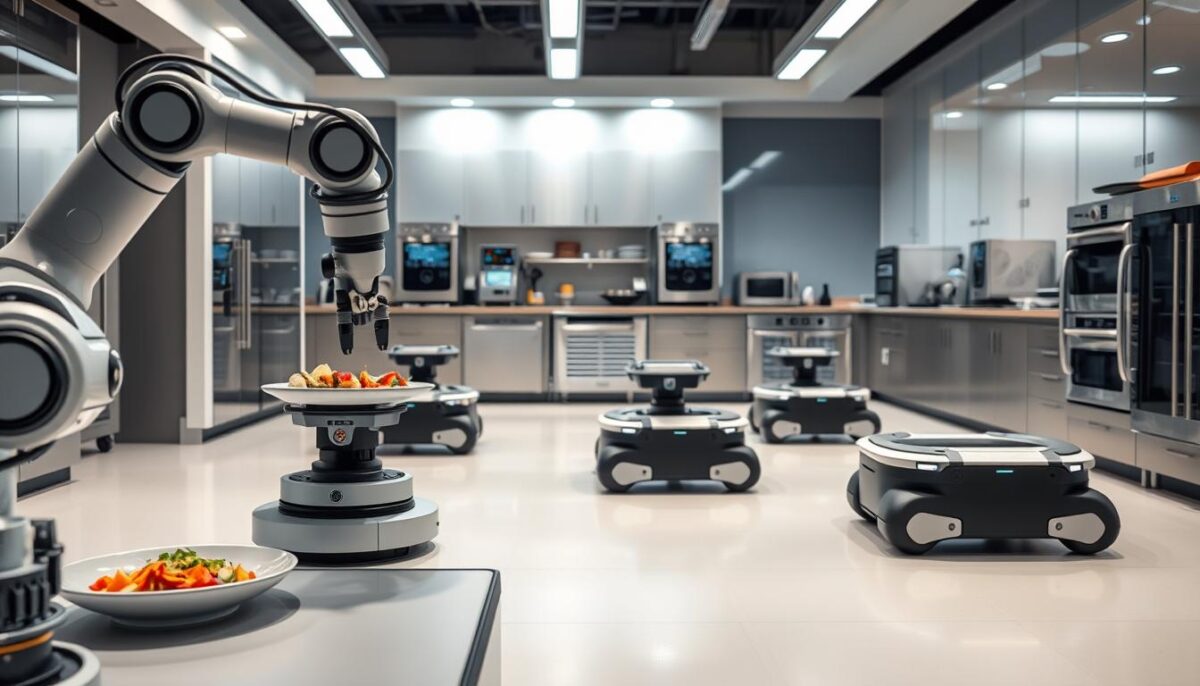
Staff Training and Adaptation Strategies
Training your staff is a critical component of successful kitchen automation implementation. It’s essential to provide comprehensive training that not only teaches employees how to use the new technology but also helps them understand how it will make their jobs easier. By involving staff early in the automation process and addressing their concerns, you can build buy-in and reduce resistance to change. Designating “technology champions” within your team can also help facilitate a smooth transition.
To ensure a supportive environment during the transition period, it’s crucial to acknowledge that there will be a learning curve and celebrate small wins along the way. Ongoing training and skill development will also be necessary as automation technologies continue to evolve, ensuring that your team stays current with the latest features and capabilities.
Conclusion: The Future of Restaurant Kitchen Automation
As the restaurant industry continues to evolve, kitchen automation is poised to play a pivotal role in shaping its future. The six smart tools discussed throughout this article work together to create a more efficient and profitable restaurant operation. By embracing automation, restaurants can anticipate more sophisticated systems capable of handling complex culinary tasks, from intricate food preparation to personalized cooking experiences.
Emerging trends, including AI-powered predictive systems, will anticipate customer needs and preferences, enhancing the dining experience and service. As automation becomes more prevalent, human staff will focus on creativity, hospitality, and the personal touches that technology cannot replicate. Restaurants that adopt kitchen automation now will be better positioned to thrive in an increasingly competitive landscape.
FAQ
How does kitchen automation improve customer satisfaction?
By streamlining food preparation and reducing wait times, kitchen automation enables me to provide faster and more accurate service, leading to higher customer satisfaction.
What are the benefits of using a Kitchen Display System (KDS)?
A KDS helps me manage orders more efficiently, reducing errors and improving food quality. It also enables my staff to prioritize tasks and manage their workload more effectively.
Can kitchen automation help reduce labor costs?
Yes, by automating tasks such as food preparation and inventory management, I can reduce my labor costs and allocate staff more efficiently.
How does automation impact food waste?
With automated inventory tracking and ordering, I can minimize food waste by ensuring that I’m not over-ordering ingredients and that my inventory is up-to-date.
What are the key considerations when implementing kitchen automation?
When implementing kitchen automation, I need to assess my restaurant’s specific needs, consider my budget, and plan for staff training to ensure a smooth transition.
How does kitchen automation affect the dining experience?
By reducing wait times and improving food quality, kitchen automation enables me to provide a better dining experience for my customers.
Can kitchen automation be integrated with existing POS systems?
Yes, many kitchen automation solutions, including KDS, can be integrated with existing POS systems, making it easier to manage orders and streamline operations.
